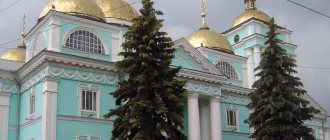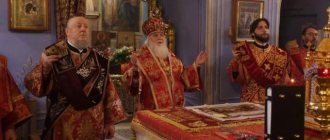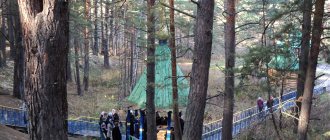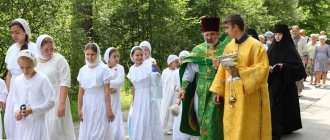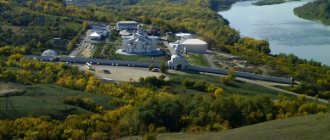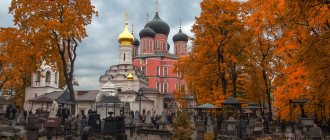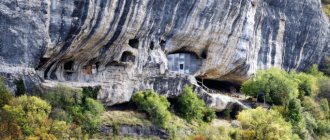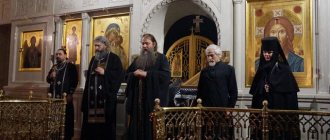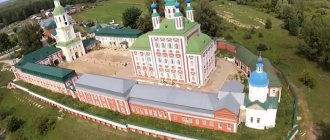Mir
Ukraine Kyiv Voznesensky (Florovsky) convent Map is loading…
{"format":"leaflet","minzoom":false,"maxzoom":false,"limit":50,"offset":0,"link":"all","sort":[""], "order":[],"headers":"show","mainlabel":"","intro":"","outro":"","searchlabel":"\u2026 \u0441\u043b\u0435\ u0434\u0443\u044e\u0449\u0438\u0435 \u0440\u0435\u0437\u0443\u043b\u044c\u0442\u0430\u0442\u044b","default":"","import-annotation":false,"width ":"auto","height":"350px","centre":{"text":"","title":"""link":"""lat":50.46265600000000262070898315869271755218505859375,"lon": 30.514171000000001043872543959878385066986083984375,"icon":""},"title":"","label":"","icon":"","lines":[],"polygons":[],"circles":[ ],"rectangles":[],"copycoords":false,"static":false,"zoom":8,"defzoom":14,"layers":["OpenStreetMap"],"image layers":[] ,"overlays":[],"resizable":false,"fullscreen":true,"scrollwheelzoom":true,"cluster":false,"clustermaxzoom":9,"clusterzoomonclick":true,"clustermaxradius":80, "clusterspiderfy":true,"geojson":"","clicktarget":"","showtitle":true,"hidenamespace":false,"template":"","userparam":"","activeicon": "","pagelabel":false,"ajaxcoordproperty":"","ajaxquery":"","locations":[{"text":"\u003Cb\u003E\u003Ca href=\"/palomnik/%D0% 92%D0%BE%D0%B7%D0%BD%D0%B5%D1%81%D0%B5%D0%BD%D1%81%D0%BA%D0%B8%D0%B9_(%D0%A4 %D0%BB%D0%BE%D1%80%D0%BE%D0%B2%D1%81%D0%BA%D0%B8%D0%B9)_%D0%B6%D0%B5%D0%BD %D1%81%D0%BA%D0%B8%D0%B9_%D0%BC%D0%BE%D0%BD%D0%B0%D1%81%D1%82%D1%8B%D1%80%D1 %8C\" title=\"\u0412\u043e\u0437\u043d\u0435\u0441\u0435\u043d\u0441\u043a\u0438\u0439 (\u0424\u043b\u043e\u0440\u043e\u0432\u0441 \u043a\ u0438\u0439) \u0436\u0435\u043d\u0441\u043a\u0438\u0439 \u043c\u043e\u043d\u0430\u0441\u0442\u044b\u0440\u044c\u003E\u0412 \u043e\u0437\u043d\u0435 \u0441\u0435\u043d\u0441\u043a\u0438\u0439 (\u0424\u043b\u043e\u0440\u043e\u0432\u0441\u043a\u0438\u0439) \u0436\u0435\u043d \u0441\u043a\u0438\u0439 \u043c\u043e\u043d\u0430\u0441\u0442\u044b\u0440\u044c\u003C/a\u003E\u003C/b\u003E\u003Chr /\u003E\u003Ca href=\"/palomnik/%D0%A1%D0 %B2%D0%BE%D0%B9%D1%81%D1%82%D0%B2%D0%BE:%D0%90%D0%BD%D0%BD%D0%BE%D1%82%D0% B0%. \u0438\u044f\»\u003E\u0410\u043d\u043d\u043e\u0442\u0430\u0446\u0438\u044f\u003C/a\u003E: \u0436\u0435\u043d\u0441\u043a\u0 438\u0439\u043c\ u043e\u043d\u0430\u0441\u0442\u044b\u0440\u044c \u043d\u0430 \u041f\u043e\u0434\u043e\u043b\u0435 \u0432 \u041a\u0438\u0435\ u0432\u0435,\u043e\u0441\u043d \u043e\u0432\u0430\u043d\u043d\u044b\u0439, \u043f\u0440\u0435\u0434\u043f\u043e\u043b\u043e\u0436\u0438\u0442\u0435\u043b\ u044c\u043d\u043e,\u0432 \u043d\u0430\u0447\u0430\u043b\u0435 XVI \u0432\u0435\u043a\u0430. \u041f\u0440\u0438 \u043e\u0431\u0438\u0442\u0435\u043b\u0438 \u0438\u043c\u0435\u0435\u0442\u0441\u044f \u0433\u043e\u0441 \u0442\u0438\u043d\u0438\u0446 \u0430 \u0434\u043b\u044f \u043f\u0430\u043b\u043e\u043c\u043d\u0438\u043a\u043e\u0432.","title":"\u0412\u043e\u0437\u043d\u0435 \u0441\u0435 \u043d\u0441\u043a\u0438\u0439 (\u0424\u043b\u043e\u0440\u043e\u0432\u0441\u043a\u0438\u0439) \u0436\u0435\u043d\u0441\u043a \u0438\u0439 \u043c\u043e \u043d\u0430\u0441\u0442\u044b\u0440\u044c","link":"","lat":50.46265600000000262070898315869271755218505859375,"lon":30.514171000000 001043872543959878385066986083984375,"icon":""}],,"imageLayers":[] }
50.462656; 30.514171
Ukraine, Kyiv, Frolovskaya street, 6/8
Kyiv
Ukraine
Telephone:
(044) 425-01-81, 425-54-62, 463-76-18
Ascension (Florovsky) Convent
of the Holy Ascension Florovsky Monastery
- a convent on Podol in Kyiv, presumably founded at the beginning of the 16th century. There is a hotel for pilgrims at the monastery.
History[edit]
Florovsky Monastery (the short name is often used) is the only women’s monastery in Kyiv that has existed since the Middle Ages. On May 17, 1566, the Polish king Sigismund II Augustus approved Archpriest Jacob Gulkevich, as well as his son and “his descendants fit for purpose,” in the right to “hold (take the place of priest) the monastery of Florus and Laurus,” given by the Kyiv voivode Prince Vasily-Konstantin Metropolitan of Ostrog and Kyiv.
Grandson o. Jacob and the son of his son Bogush, monk of the Kiev-Pechersk Lavra John Gulkevich, having been sent to serve in the Slutsk Monastery and seeing worthy care for the Florovsky monastery on the part of Abbess Agafia Gumenitskaya, ceded his rights to her by letter dated May 12, 1642 (from the 1773 inventory It is known that in 1639, under the abbess Euphrosyne of Ulskaya, the Florovsky monastery burned down, and from the charter of King Vladislav dated December 27, 1646 - that at the time of the death of this abbess the monastery church was “aged” and “impoverished”; Erlich’s chronicle reports, that when Kiev was burned by the Poles in 1651, the monastery was again damaged by fire; it was probably quickly restored, since already in 1655 Abbess Agathia made a rich contribution to the Mezhigorsk monastery).
In connection with the beginning of the construction by Tsar Peter I of a large earthen fortress around the Kiev-Pechersk Lavra and the placement of a military warehouse in the Ascension Monastery of the Virgin Mary opposite the Lavra Holy Gates, the nuns of this monastery were transferred in 1711 to the Florovsky Monastery. The grounds of the closed monastery were also assigned to the Florovsky monastery, which became known as the Voznesensko-Florovsky monastery.
In 1757, she was tonsured in the monastery with the name Nektaria, and Princess Natalia Dolgorukova lived until her death in 1771. The daughter of an associate of Peter I, Field Marshal Boris Sheremetyev, she was born in the city of Lubny in 1714. In 1729, Natalia was engaged to a friend of Peter II, Prince Ivan Alekseevich Dolgorukov. Soon Peter II died, and Anna Ioannovna ascended the throne, and the Dolgorukovs found themselves in disgrace. Many advised Natalia to break off the engagement, but the girl, out of sincere love for Ivan Alekseevich and out of conscience (“is this an honest conscience, when he was great, I happily went for him, and when he became unhappy, refuse him”), she entered married him (1730). The day after the wedding, the spouses were notified of the exile. In Siberia, their children Mikhail (1731) and Dimitri (1738) were born. Before the birth of the youngest, Ivan Alekseevich was taken to Novgorod, where in 1739 he was quartered. With the permission of the queen, Natalia settled in Moscow in 1740 and devoted herself to raising children. When the eldest son entered military service and got married, she retired to the Florovsky Monastery, and the youngest son settled in the Kiev-Pechersk Lavra. In 1767, M. Nektaria described her life from childhood to her arrival in Siberia for her son Mikhail and his wife, and also accepted the schema. In 1769, her seriously ill son Dimitri died in the arms of the ascetic. He was buried at the entrance to the Assumption Cathedral of the Lavra. The body of M. Nektaria was subsequently buried there. In 1810, her grandson Ivan Mikhailovich published her “Handwritten Notes,” which made the princess the first memoirist of Russia and was reprinted several times. “I don’t boast about my patience, but from the grace of God I will boast that He gave me so much strength that I endured... It would be impossible for a mortal man to suffer such blows when the power of the Lord did not support me from above... I proved to the world that I am faithful in love: in all in misfortunes, I was my husband’s comrade... In all the troubles, I never repented, why did I marry him... I don’t grieve that my life is gone, but I thank my God that He let me know such a person who was worth it, so that for me pay for love with your life,” wrote M. Nektaria. The feat of her sacrificial love was sung in verse by Kondraty Ryleev, Ivan Kozlov (his poem about the princess reflects the legend that before her tonsure she threw her wedding ring into the Dnieper), Nikolai Nekrasov (poem “Russian Women”: “May the marble of graves be more durable / Than the cross wooden in the desert, / But the world has not yet forgotten Dolgorukaya, / and there is no trace of Biron”).
All R. XVIII century St. began her monastic path in the Florovsky Monastery. Alexandra Diveevskaya (†1789), in the world Agafia Semyonovna Melgunova, is the founder of the Seraphim-Diveevsky Convent in Russia. Originally from the Nizhny Novgorod nobles, the early widowed Ryazan landowner Agafia came with her 3-year-old daughter to Kiev, where she took secret monastic vows and was awarded a vision of the Most Holy Theotokos, who ordered Melgunova to go wander to the north of Russia and establish a “4th inheritance” at the place indicated above ( after Georgia, Athos, Kyiv) Mother of God. The village became such a place. Diveevo, where St. Alexandra founded a women's community, which was later taken under the tutelage of St. Seraphim of Sarov - a monk of the neighboring Sarov desert.
In the 1st half. XIX century St. finished her earthly journey in the monastery. Elena Kiev-Florovskaya, in the world Ekaterina Alekseevna Bekhteeva. She was born in 1756 into a noble family in the city of Zadonsk. The Bekhteevs' friend was St. Tikhon of Zadonsk (†1783), communication with whom influenced young Catherine’s desire to choose monasticism. In 1774, the girl secretly went to the Voronezh convent. General Alexei Bekhteev managed to find his daughter, but, heeding the words of the abbess, whom the young ascetic asked for patronage, he forgave Catherine and accepted her choice. When the things of the deceased St. Tikhon was distributed, according to his will, to the poor; nun Elena (with her fervent prayers) received a coffin that was not used at the burial of the bishop (prepared by the archpastor himself, it could not accommodate his body in full bishop’s vestments). Seeing the special piety of M. Elena, the laity began to turn to her for advice on spiritual life. This aroused the envy of the abbess, and she, having slandered Mother Elena, achieved her expulsion from the monastery. Strengthening the ascetic, St. appeared to her in a dream. Tikhon promised: “I will reward you for your loss with consolation that you do not expect.” To support the innocent sufferer, the nun Evgenia, close to her, left the monastery with her. The spiritual sisters rented housing near Kyiv and visited the Kiev Pechersk Lavra every day. When the period of exile prescribed by law for alleged misconduct expired, the sisters purchased a cell in the Florovsky monastery, but the Lavra elder Michael did not give his blessing to settle there, saying that this cell was inconvenient. The fire at Podol in 1811 destroyed this cell and confirmed the elder’s prophecy. Due to rumors that the monastery would not be restored, the sisters went to Voronezh, but, having received news of the restoration of the monastery and an invitation to it, they returned to Kyiv and brought with them the coffin of St. Tikhon. As time passed, the sisters’ new cell burned down, and they again had to rent housing outside the city. Once in the Lavra, M. Elena was met by a noble resident of Voronezh whom she knew. He persuaded the Kyiv Metropolitan Serapion to help two nuns get a new cell in the monastery. But the direct executor of the request was already the successor of Bishop Serapion - Metropolitan Evgeniy (Bolkhovitinov), a distant relative of Mother Elena. Thus ended many years of trials - slander, wanderings, poverty, hunger, life far from the desired abodes - everything that the ascetic endured with humility and faith. In 1834, Rev. Elena died. According to the will, she was buried in the tomb of St. Tikhon. This remarkable fact was stated in the epitaph on the tombstone. In 1890, according to the words of the Florovskaya nun Evgenia Tkacheva, a biography of the St. was compiled and published. Helena (additional data about the ascetic have recently been published). In 1913, over the grave of St. Elena installed a glass canopy. The memory of the ascetic was revered by the service of ordered memorial services. At the turn of the 80-90s. XX century An icon of St. Petersburg was installed inside the canopy. Elena's letters from Alexey Surovikin. In 2009, the relics of St. Helena was found and transferred to the Ascension Cathedral of the monastery. July 9, 2009 Priest. The Synod of the UOC decided to canonize St. Elena, 17 Aug. the same year, the relics of the ascetic were found and transferred to the Ascension Cathedral of the monastery, Oct. 8. Her solemn glorification as a saint took place.
In the beginning. XIX century In the monastery, Blessed Irina Zelenogorskaya (Lazareva, April 22, 1843) - the spiritual daughter of St. Seraphim of Sarov, who, with his blessing, became the founder of a convent in honor of the icon of the Savior Not Made by Hands in the Green Mountains of the Nizhny Novgorod province (she was one of the 1st nuns of the Diveyevo Mill maiden community, the 3rd its abbess).
From 1856 until her death in 1881, the monastery was ruled by Abbess Parthenia, in the world Apollinaria Alexandrovna Adabash was a spiritual poetess (a book of her poems was published in 1875 and 2008), who participated in the compilation of the “Life” of St. Parthenia of Kyiv (†1855). She was born in 1810 in the Yekaterinoslav province into a noble family, and in 1840 she became a resident of the Florovsky monastery, where in 1856 she became a monk. In 1870, Abbess Parthenia opened a shelter at the monastery for orphan girls and daughters of poor parents. Compiled by her “Service of St. equal to app. Cyril and Methodius" was published with the approval of the Holy Synod of the Russian Church.
In 1920, the monastery was registered as a parish (to maintain access to churches) and a labor artel (to preserve living space), but in 1923 the Ascension Cathedral was taken away from the artel (after that it belonged to the “renovationists” for about a year, then stood empty) and families of workers were settled in the monastery (this is how the “Town of Metalworkers” arose), in 1929 the artel was officially abolished and by 1934 most of the nuns were evicted.
In 1941, the monastery was revived: the nuns used the permission of the Nazi occupiers to open churches (it was given to win the sympathy of the population, but later split the Church), but constantly risked their lives. When the Kyiv underground secretly brought exhausted children from a closed orphanage set up by the Nazis in the neighborhood to the monastery, the nuns helped the kids get stronger, and after the war, some of those they saved came to the monastery to thank them for the newfound gift of life. Leaving the city, the Nazis tried to expel the nuns from the monastery, which during the days of the battles for Kyiv fell into the “removal zone,” but the nuns hid and sheltered other Kiev residents.
In the 1960s the monastery survived an attempt at a new closure: the nuns were deprived of a number of premises and registration in the monastery, many were evicted, passport checks were carried out periodically (once during a night check, when documents were confiscated without explanation, one of the novices suffered a nervous shock and was hospitalized ). The persecution was stopped by the intervention of His Holiness Patriarch Alexy I of Moscow and All Rus', who, after Abbess Animaisa addressed him, entered into correspondence with the Chairman of the Council for the Affairs of the Russian Orthodox Church under the USSR Council of Ministers.
The financial situation of the monastery was very sad until the 18th century
The financial situation of the Florovsky Monastery was very disastrous. It remained approximately this way until the 18th century. It is believed that in 1712 Peter the first decided to close the Ascension Monastery, which stood on Pechersk Mountain.
Why did this happen, for what reason did the Russian Tsar decide to close the monastery? It is believed that the place where the Ascension Monastery stood for women was required for the construction of an arsenal.
The Arsenal is a national cultural, artistic and museum complex in Kyiv.
It is believed that those who lived in the Ascension Monastery were transferred to the Florovsky Monastery. Then almost the entire estate of the closed Ascension Monastery was transferred to the Florovsky Monastery.
After the territory of the Ascension Monastery was given to the Florovsky Monastery, construction began here of a large new stone church in honor of the Ascension of the Lord.
The new monastery was built and consecrated on May 2, 1732 by Metropolitan Raphael. It was after this event that the monastery began to be called the Holy Ascension Frolovsky Monastery.
What faith is recognized as legal among Ukrainians?
Description[edit]
The monastery estate stretches from northwest to southeast, along the northeastern slope of Castle Hill. On the transverse axis of the monastery its main buildings are located: in order from northeast to southwest, these are St. gates with a 4-tier bell tower above them, the Ascension Cathedral (in the very heart of the monastery), the warm Nikolo-Tikhvin Church. To the west of the latter, at the foot of the steep wooded slope of the mountain is the Church of the Resurrection, in the southeastern half of the monastery is the temple of the Kazan Icon of the Blessed Virgin Mary. South-east of the Ascension Cathedral is a 1-story abbot building. Other buildings of the monastery are 2-story cell buildings. Stone construction in the monastery began at the turn of the 17th-18th centuries. from the construction of part of the current Nikolo-Tikhvin Church, and soon the Ascension Cathedral was erected. When Podol burned to the ground on July 9, 1811, the monastery lost its wooden buildings, the stone ones were badly damaged, and many nuns who took refuge in the Ascension Cathedral suffocated (according to various sources: 23, more than 30, 40). The monastery was rebuilt mainly in stone.
In 1740-1741 a bell tower was erected above the Holy Gate of the monastery (an archival file from 1744 mentions it as a “murovan belfry,” but a number of historians claim that only the lower tier was stone, and the two upper ones were wooden). After the fire of 1811, the bell tower was rebuilt (according to some sources, it was rebuilt on old foundations; according to others, it replaced the burnt wooden tiers with stone ones) in the style of classicism by the architect Andrei Melensky (different dates are indicated in the literature: 1817-1818, 1821).
As of 1682, the monastery had 2 wooden churches - St. martyr Flora and St. martyr Lavra. The plan of Kyiv from 1695 shows one wooden church that burned down during the city fire of 1718 (archival data from 1759 indicates that it had chapels of the Ascension of the Lord and St. Anna). In 1722-1732 On the site of the burnt church, a stone 3-domed Ascension Cathedral was built in the Ukrainian Baroque style. In 1777, in the right aisle of the temple, a throne was built in honor of the Council of the Blessed Virgin Mary, between 1772-1780. – 2 more altars in the choir: the right one – All Saints, the left – the Akhtyrka Icon of the Blessed Virgin Mary. In 1780 the temple was painted, in 1805 the paintings were renewed. After the fire in Podol in 1811, the interior walls were painted with light gray paint in 1818, then in 1865 and 1904-1906. the painting was renewed again. It represents holy faces and images of sacred events on a monochromatic background, which was replaced during the recent renovation from gray to blue-gray. In the painting of the temple, repetitions of well-known compositions of the 17th and 19th centuries are visible: an example of the 1st is the allegory “Blessed are the meek” based on an engraving from the Weigel Bible (Augsburg, 1695), the 2nd is “The Baptism of the Lord” based on the work of Mikhail Nesterov from St. Vladimir cathedral in Kyiv (1882-1896). In the 1980s A new wooden iconostasis was installed in the cathedral: it was made based on a photograph of a lost baroque iconostasis from the 18th century.
At the southern wall of the temple at the turn of the 20th-21st centuries. The tombstone of Abbess Eupraxia, who ruled the monastery in 1898-1919, has been recreated. In the 19th century near the western corners of the cathedral there were 2 wooden gazebos with springs: today, on the site of the southern one, water flows out of a small stone pyramid. It is pleasant to pay attention to the 1-story stone house of the abbess to the southeast of the cathedral: left to us in 1821 by the architect Andrei Melensky as an interesting example of a small residential building in the classicist style, it is noticeable by the rounded porticoes with columns on the side porches. In the same sense, the “11th building” (1822-1832) to the south of the cathedral is noteworthy: the corner of the building facing the temple is rounded and decorated with a colonnade with a balcony.
In addition to the wooden church that burned down in 1718, before the fire the monastery had (according to archival data from 1759) a stone refectory church of St. ap. John the Evangelist (with the upper chapel of the Holy Blessed Prince Alexander Nevsky). Nowadays this is the Nikolo-Tikhvin Church, the oldest stone building of the monastery. In 1758-1759 The temple was repaired by the nun Nektaria (Dolgorukova), after which a chapel of Sts. was built in the choir. mchch. Flora and Laurel (1759). After the fire of 1811, the temple was repaired: in 1812, the 2nd floor was built, and the chapel of Sts. was consecrated in the lower one. mchch. Flora and Lavra, in 1818-1819. on the 2nd floor they built a chapel of the Tikhvin Icon of the Mother of God. In 1843, the lower altar was moved to the Kazan Church (see below), and in 1857, in its place, a throne was consecrated in honor of St. Nicholas of Myra. Executed in the Ukrainian Baroque style, the St. Nicholas Tikhvin Church is original in its layout: the refectory chamber adjoins the temple from the north-west. On the north-eastern wall of the covered porch, adjacent to the altar from the south-east, on the 2nd floor. XX century The painting “Prayer of St. Seraphim of Sarov on the stone” (slightly changed during renovation in the 1990s). Due to the small size of the church, regular services are not held in it, and it is not accessible for pilgrimage visits. At the southern wall of the temple there is the grave of Bishop Theodore (Vlasov), a hierarch who was secretly ordained in connection with the beginning of the persecution of the Church and who died in 1924.
The stone Church of the Resurrection of Christ, designed in the form of a rotunda with adjacent rectangular extensions in the north-west and south-east, was erected in 1821-1824. in the style of classicism by the architect Andrei Melensky - to replace the wooden church of the same name that burned down in 1811, which was built in 1757 by the nun Nektaria (Dolgorukova) at her cell, “so that... due to the illness that was almost always present in her years and poor health, she would not have the chance to through illness, they will be deprived of Divine church singing and reading.” Near the eastern facade of the temple there is a glazed metal chapel over the old tombstone of St. Elena (Bekhteeva, †1834).
Temple of the Kazan Icon of the Mother of God 1841-1844. built according to the design of the architect Pavel Sparro in the form of a basilica with facades decorated in a pseudo-Russian style for winter services, due to the growing number of nuns and the cramped conditions of the St. Nicholas-Tikhvin Church. The southern aisle of the Kazan Church was consecrated in honor of St. mchch. Flora and Lavra, northern – St. ap. John the Theologian. In 1870 the temple was painted. In 1881, Abbess Parthenia (Adabash) was buried near its walls. The tombstones of prominent Kiev residents buried at the church have not survived. Since 1923, the church was listed as a parish church; in 1934 it was closed, transferred to a children's clothing factory and converted into a factory building by demolishing the dome and adding walls. In the 1990s. it was returned to the monastery, after which it regained its pre-revolutionary appearance from the outside.
In 1758, nun Nektaria (Dolgorukova) surrounded the monastery on 3 sides (northwest, northeast, southeast) with a stone fence, which was rebuilt in 1819-1820. In 1819, the monastery was given the dominant slope of Castle Hill, and in 1835 the top itself was given to the monastery for the construction of a cemetery with a church. In 1844-1845 and 1848-1850. a stone fence was built in parts on Castle Hill: its contour resembled the letter “P”, the “legs” of which were on the steep north-eastern slope, and the “shelf” was on the south-western edge of the plateau (fragments of ruins remained from this wall) . In 1854-1857 A stone church of the Holy Trinity was erected on the plateau (closed in 1927 and demolished in 1938). In 1858-1859 a convenient serpentine road was built up the mountain (after the destruction of the cemetery church it fell into disrepair). In 1920, the famous church historian Stepan Golubev was buried on the mountain, and in 1921, his colleague Nikolai Petrov. Today Castle Hill is partially covered with forest (on the north side). In the XIV-XVII centuries. the mountain was crowned by a wooden castle (hence its name), which served as the citadel of Kyiv under the control of Lithuania and Poland. In 1552, there were 3 Orthodox and one Catholic churches in the castle. The last Polish governor to live in the castle was the Orthodox nobleman Adam Kisiel, in whose memory the mountain acquired the name Kisielewka.
Stone buildings on the territory of the monastery were built at the expense of Emperor Alexander
There is also a mention that until 1811, all the buildings that were located on the territory of the monastery burned in a fire. There is only one stone church left in honor of the Ascension of the Lord.
During this terrible fire, the nuns transferred all property to the stone temple. Thus, trying to save the property of the monastery, 40 nuns died in the smoke.
With the support of Alexander the First, stone buildings were built on the territory of the monastery
It is believed that the monastery began to be restored with the support of Emperor Alexander the First. This happened in 1812. A huge amount of money was allocated from the treasury for the construction and construction of new churches. These funds were also used to build many buildings for the nuns to live in.
In 1818, construction of stone buildings began on the territory of the monastery. Closer to the 19th century, the entire territory of the monastery was actively expanded and completed.
XX
by the beginning of this century, all the buildings of the Florovsky Monastery were stone
And by the beginning of the 20th century it was possible to see that the entire territory of the Florovsky Monastery was built up with stone buildings.
Shrines[edit]
- Lists of icons of the Mother of God “Kazan” (with a particle of relics), “Tikhvin”, “Quick to Hear”, “Look at Humility”, “Rudnenskaya” (the original of the 2nd half of the 17th century was, according to the “Chronicle of Samuil Velichko”, brought in 1690 by priest Vasily from the village of Rudny in the Chernigov region to the Pechersky Ascension Monastery, later it became the property of the Florovsky monastery, since Soviet times its fate has been unknown)
- Icons with particles of the relics of St. VMC. Barbara, St. Vmch. George the Victorious, St. martyr Lavra, St. Nicholas of Myra, St. Theodosius of Chernigov, St. Job of Pochaevsky, St. Alexandra Diveevskaya, relics of St. Elena (Bekhteeva), embroidered icon of St. Seraphim of Sarov by Abbess Flavia (Tishchenko), who ruled the monastery in 1941-1956. (the art of artistic sewing was brought to the Florovsky monastery by nuns of the abolished Pechersk Ascension Monastery at the beginning of the 18th century).
Abbesses
- Agathia (Gumenitskaya) (mentioned 1632 - 1636)
- Euphrosyne (Ulskaya) (mentioned 1639 - December 26, 1656 [2])
- Agathia (Gumenitskaya), again (mentioned December 26, 1656)
- Maria (Mokievskaya) (mentioned 1722)
- Justina (Todorskaya) (1753 - 1759)
- Theodora (Smorzhevskaya) (1762 - 1772)
- Calisthena (Miloslavskaya) (1772 - 1788)
- Augusta (Apraksina) (1790 - 1802)
- Maria (Ternaviot) (1802 - 1806)
- Pulcheria (Shakhovskaya) (1806 - 1812)
- Smaragda (Norova) (1812 - December 7, 1832)
- Smaragda (Nabokov) (December 7, 1832 - September 14, 1834)
- Fomaida (Pozdeeva) (September - December 1834)
- Thomaida (1834 - 1839)
- Juvenalia (Mikhailovich) (1840 - 1848)
- Serafima (Vonlyarlyarskaya) (1849 - 1853)
- Agnia (Grindling) (1854 - 1865)
- Parthenia (Adabash) (1866 - June 4, 1881)
- Eleazar (Hubert) (1882 - 1899)
- Eupraxia (Artemenkova) (1899 - 1919 [3])
….
From 1929 to 1942 the monastery was closed
- Flavia (Tishchenko) (1942 - 1956)
- Antonia, abbot. [4].
- Animaisa (Kaidunova-Butovskaya) (? - 1972 [5])
- Agnes (Levchenko) (1972 - July 20, 1985)
- Antonia (Filkina) (August 31, 1985 - April 16, 2018)
- Evlampia (Eliseikina) (from May 25, 2021 [6])
Location[edit]
The monastery is nestled in the quiet southwestern “backyards” of the main square of Podol - Kontraktova, at the northeastern foot of the wooded Castle Hill (also known as Kiselevka, or Florovskaya). The Holy Gate of the monastery faces the street. Pritisko-Nikolskaya, separated from the square by one block (the northern end of the street ends with a detour around the Church of St. Nicholas Pritiska, the southern end - with a detour around the Church of the Most Holy Theotokos “Pirogoschey”). Located near a traffic intersection, the hum of which can be heard even on Pritisko-Nikolskaya Street, the monastery is surprisingly quiet inside its estate (it even seems like a suburban one): a sudden silence covers the visitor immediately after passing through St. gates (a similar feeling arises only in the Intercession Convent, fenced off from the noisy avenue by a block and lined with trees; both monasteries have something else in common: having avoided repeated closure in the 1960s, they remained at that time the last operating monasteries in Kyiv).
Address
: Ukraine, Kyiv, Frolovskaya st., 6/8.
Telephone:
(044) 425-01-81, 425-54-62, 463-76-18
In 1929, the monastery of Flora and Lavra was closed
During the period of Soviet power, many monasteries and churches were closed, the same thing happened with the Flora and Lavra monastery in 1929.
In 1934, the Church of the Holy Trinity in the monastery cemetery was destroyed. The Monastery of Flora and Lavra began to be revived only in 1941. At that time, the Germans entered Kyiv and from that moment the temple was no longer closed.
1941
starting this year, the monastery of Flora and Lavra was gradually revived and did not close during the war
In 1960, the Kazan Church on the territory of the monastery was rebuilt into a sewing workshop, and workshops were located in the Resurrection Church and in the refectory church in honor of St. Nicholas the Wonderworker. Also, later, cell buildings were taken away from the monastery and a prosthetic factory was built in their parts.
In 1962, the nuns who were under the care of the Resurrection Monastery were discharged from the Florovsky Monastery.
Ukrainian Orthodox Church. Why did they want to remove the first ruling bishop from office?
Literature
- Historical and statistical description of the Kiev-Florovsky Ascension Convent. - Kyiv: printing house of S. V. Kulzhenko, 1894.
To improve this article it is desirable:
Please, after fixing the problem, remove it from the list of parameters. After eliminating all the shortcomings, this template can be deleted by any participant. |
Florovsky Monastery is one of the most famous monasteries in the city of Kyiv
Florovsky Monastery is one of the most famous monasteries in the city of Kyiv. The main thing worth noting is that the monastery survived such difficult times. All churches that were destroyed were returned to the monastery.
Although for a long time the prosthetic factory never left the territory of the monastery, the Kazan Church was quickly freed from sewing production. It is currently being restored. Now all services are held in the Ascension Cathedral.
Florovsky Monastery of Kyiv in the 1920s. Photo: etoretro.ru
The Florovsky Monastery is considered a communal monastery in Kyiv to this day.

